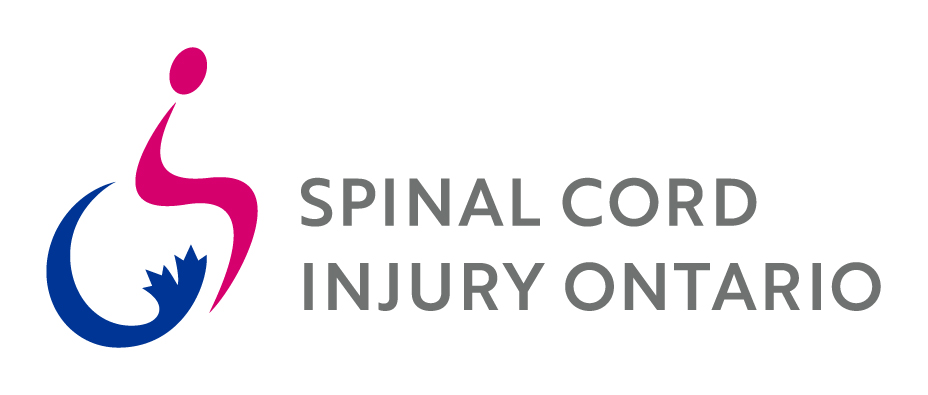Known as a traditional North American gathering place for millennia, Sault Ste. Marie grew from its indigenous roots with the development of steel, power and paper industries. It is surrounded by an exquisite wilderness environment for outdoor sports and artists like the Group of Seven, and famous Sault natives including astronaut Dr. Roberta Bondar. Sault Ste. Marie is now a bustling city and continues to be an important destination for business, trade and travel.
The city council is determined that the city be a leader in being accessible and barrier free. Guided by the four core principles of dignity, independence, integration and equality of opportunity, they are committed to providing quality goods, services and facilities that are accessible to everyone in a manner that respects the dignity and independence of people with disabilities. The City’s Accessibility Advisory Committee advises Council and city agencies, boards and commissions, in promoting and facilitating a barrier-free Sault Ste. Marie for citizens of all abilities. They are doing this to meet the requirements of the Accessibility for Ontarians with Disabilities Act and the Human Rights Code, but in speaking with them, they are going beyond the legislation to foster an accessible environment in a very creative and mindful manner, and are building a broad-based model of accessibility to which other municipalities can aspire.
I spoke with Don McConnell, Director of Planning and Enterprise Services who provided insight into what the city has already done and what they are planning to do. He has worked as a professional planner in northern Ontario for 38 years, and has been involved with all aspects of municipal planning. He said, “The current city of Sault Ste. Marie Multi-Year Accessibility Plan is a five-year plan starting in 2016 and ending in 2020, and we are well underway to achieving our goals.
Diane Morrell, Spinal Cord Injury Ontario’s Regional Services Co-ordinator in the Sault has a close working relationship with the city. Her office is located in the community centre next to Nancie Scott, Accessibility
Co-ordinator for the city of Sault Ste. Marie. Diane said, “We have a wonderful complementary partnership, and we make recommendations to the city regarding accessibility needs, and offer ideas on how to make things better. We are fully immersed!” Diane is an active member of the Accessibility Advisory Committee and the chair of the site plan sub-committee.
There are nine major initiatives being undertaken by the city to ensure accessibility for everyone. Don said, “We are doing this to create a barrier free environment for people with physical disabilities, including our aging population. By allowing greater accessibility to accommodations, businesses, and recreational venues, everyone will benefit.”
Ernest Hemingway, world renowned author, was quoted in the Toronto Star on August 28, 1920 saying, “At the present time, the best rainbow trout fishing in the world is in the Rapids at the Canadian Soo.”
The city’s key accessibility projects are as follows:
- Rental Housing Community Improvement Plan (CIP)
This plan has been undertaken for a number of years, with the intention to increase the city’s inventory of affordable rental accommodation. This will benefit both local residents and support the current initiatives to attract newcomers to the community. Specifically, the CIP permits the use of property tax assistance, including grants, as an incentive to encourage new investment in rental housing. A grant may be provided as a direct payment or as a tax credit. This includes all vacant and occupied properties zoned to permit apartment buildings of four or more units.One of the main objectives of the plan is to encourage the construction of additional barrier free accommodation. Projects which meet the minimum number of barrier free units required under the Ontario Building Code (15% of all new residential units) will be eligible for a partial tax grant of up to three years. Don said, “We look at each proposal on a project by project basis. If a new building exceeds the 15% requirement, then the city may allow an additional tax rebate year. This is intended to get ahead of our baby boomer aging population.”
- Downtown Community Improvement Plan Grant Programs
Inclusive environments enhance the quality of life for all and promote acceptance. Pursuing exterior or interior building enhancements can provide opportunities to incorporate designs that create accessible spaces to the general public. Applicants can receive direct grants or a tax increment equivalent grant/rebate, depending on the project. Barrier free considerations include accessible door handles, wide door clearances and ramps for entrances, accessible washrooms, wider interior pathways that are free from obstacles, and sales and service counters that have a lowered segment for people who use wheelchairs.The façade improvement grant encourages commercial building owners to invest in façade renovations and storefront improvements. This downtown improvement grant now includes a section on funding for accessibility. Previously it was only available for façade improvements. The grant, up to $25,000, incentivizes businesses to improve accessibility of older buildings and make the downtown more beautiful.“The city will be implementing a Universal Design Policy in the city’s Official Plan,” said Don. “It is a subtle but important inclusion for us to put accessibility at the forefront. It’s an encouragement for other municipalities to do something about barrier free environments and we want them to replicate our plan as much as possible.”
- Power Wheelchair Charging Stations
The city is in the process of having designated power wheelchair charging stations in all municipal buildings, all city owned facilities, some outdoor facilities and in partnership with many frequently used places like shopping malls. The city has their own electricians who will install the stations and the city is extending this offering to the rest of the business community. The stations will be identified with a blue plug and a sign that can be placed in a store window. When in place, the city will provide the charging locations on a map on their website.
- Accessible Sidewalks
The city is moving towards the development of more wheel friendly sidewalk surfaces. Rather than using trowels for expansion joints between concrete slabs on the sidewalk, they are moving towards using saw cuts which are very thin with less spacing between the concrete slabs. This will mean a smoother ride for anyone using a mobility device. They are also changing walkways so that paving stones will no longer be used as pedestrian surfaces, but will only be used as visual accents and edging for pathways, creating a smoother path for travel.
- StopGap Program
This program was not created in Sault Ste. Marie, but adopted by the city as a beneficial to improving accessibility. It is innovative in that it uses the Ontario Works Job Development Program to help introduce people to carpentry where they learn to build ramps. StopGap gets made to order ramps for local businesses, and this is supported by the local Downtown Association.
- Public Restroom Map
The city has posted a map of accessible restrooms on their website.
- Vulnerable Person Registry
This important program was developed in Sault Ste. Marie more than ten years ago and it is growing. People can self-identify as vulnerable (any disability) in certain situations, whether it be a fire at their address, or larger scale, say a gas leak in a whole neighbourhood. We use geographic information systems mapping when 911 is initiated and addresses are given. A vulnerable person will be given a red flag regarding vulnerability in the emergency so first responders can meet their unique needs in the most appropriate way.Currently, between 1,200 and 1,500 people are registered for the program in Sault Ste. Marie. The program is now being offered by other cities including the city of Vaughn.
- Downtown Public Furniture
The city is in the process of upgrading street and park furniture in the downtown area by installing barrier free tables and new benches with arm and back rests, which as we all age, will be appreciated.
- Multi Use Path
Sault Ste. Marie has a very popular highly used trail that is ten feet wide, and 24k long. This multi-use path is divided for cyclists and pedestrians in the downtown area. There are plans to extend the path 3k in the downtown next year as part of a public works program. The path is built to a high standard out of asphalt. It holds up well in the weather, with parts of it being plowed in the winter months.
Sault Ste. Marie has set itself up as a model for excellence when it comes to accessibility and they are working diligently to achieve their goals.
For more information on topics discussed in this article, please visit www.saultstemarie.ca.
Image: SCIO’s Diane Morrell (left) and Peer Support Volunteer Denise Elliott






